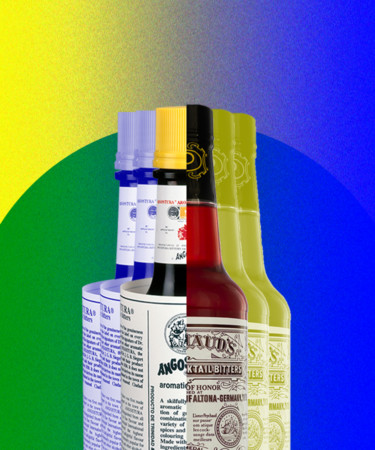In modern cocktail culture, bitters are an integral part of any bartender’s arsenal. Even with just a dash or two, these botanical-infused elixirs pack a punch that adds an extra layer of complexity to any drink.
For centuries, bitters were used to cure a medley of ailments, but would eventually become a popular tool for altering a drink’s unsavory flavors and, later, an essential ingredient in cocktails. Even one of the first known written definitions of “cocktail” found in the 1806 New York newspaper The Balance and Columbian Repository describes it as “a stimulating liquor composed of any kind of sugar, water and bitters.”
Two of the most recognizable bitters brands today, Peychaud’s and Angostura, are staples in both classic and modern cocktails. According to Drinks International, Angostura is both the best-selling and top-trending brand for bitters, with “95 percent of bars attesting to stocking Angostura as one of their three most used cocktail bitters, and 83 percent suggesting it was their number one choice.” Peychaud’s comes in second on the best seller’s list and third on trending.
While both Peychaud’s and Angostura are 19th century elixirs that still command the attention of drinks experts around the world, VinePair put the popular bitters to the test to find out what sets these two iconic brands apart.
Origin
Antoine Amédée Peychaud is credited with bringing his family’s bitters recipe all the way from San Domingo (now Haiti) to his new home in New Orleans. There are a few different versions of the story out there, but many believe it was Peychaud’s son, also named Antoine, who would go on to popularize the namesake tincture at his French Quarter apothecary beginning in 1838.
Established a few years earlier, in 1824, the House of Angostura credits Dr. Johann Siegert, a German doctor in the army of Simón Bolívar for its invention. While living in the Venezuelan town of Angostura, known today as Ciudad Bolívar, Dr. Siegert perfected a medicinal potion that was used to help ailing soldiers. Siegert’s three sons would eventually move the family business to the island of Trinidad, where they continued their father’s legacy.
Flavor
Peychaud’s is the lighter and sweeter of the two, with notes of candied cherry, clove, orange, and a distinct bitter finish. Angostura is deeper and more savory. For Shane O’Neill, the lead bartender at Quality Eats in New York, Peychaud’s has a strong anise flavor, while Angostura “has much more of a spiced flavor, like cloves and cinnamon.”
Color
Peychaud’s is decidedly the brighter and more colorful of the two bitters, with cherry red and orange hues, while Angostura is amber or caramel-colored, similar in appearance to watered-down cola.
Alcohol Content
Angostura is the more powerful, coming in at 89.4 proof, but because a dash contains a minute amount of alcohol, the company actually markets it as non-alcoholic. Peychaud’s comes in a bit lower, at 70 proof.
Use in Cocktails
Peychaud’s is most popular as an addition in a Sazerac, believed by some historians to be America’s very first cocktail and what O’Neill likes to call a “New Orleans Old Fashioned.”
Also a fixture in storied classics, Angostura is muddled with a sugar cube in the Old Fashioned or combined with rye and sweet vermouth in a Manhattan. Two or three dashes of Angostura elegantly grace a Pisco Sour’s frothy head, and in a spicy Angostura Sour, it’s the only spirituous addition.
But the two bitters aren’t always rivals. The potent Vieux Carré incorporates Cognac, rye, sweet vermouth, and Benedictine with a dash of both.
Why the Pros Love Each
For O’Neill, both Peychaud’s and Angostura are must-haves behind the bar, akin to a chef’s salt and pepper. Thankfully, neither product is expensive and a bottle will last a long while. “Think of bitters as the seasoning to cocktails. One to two dashes goes a long way,” he adds.
